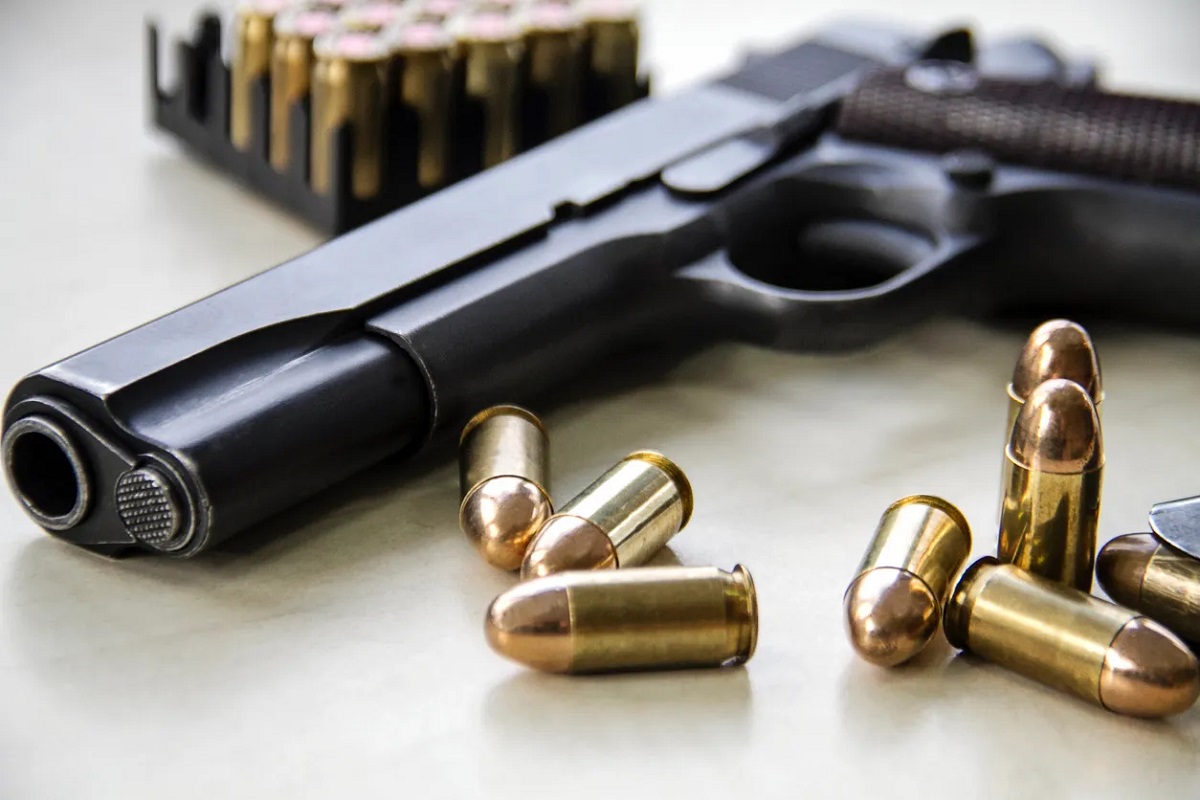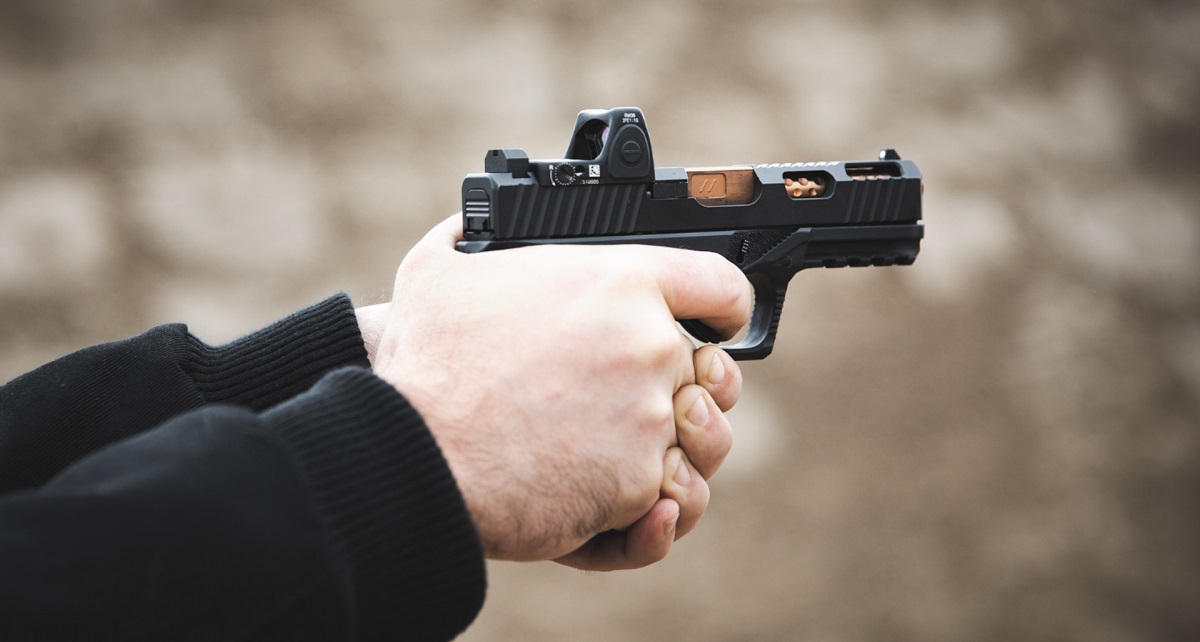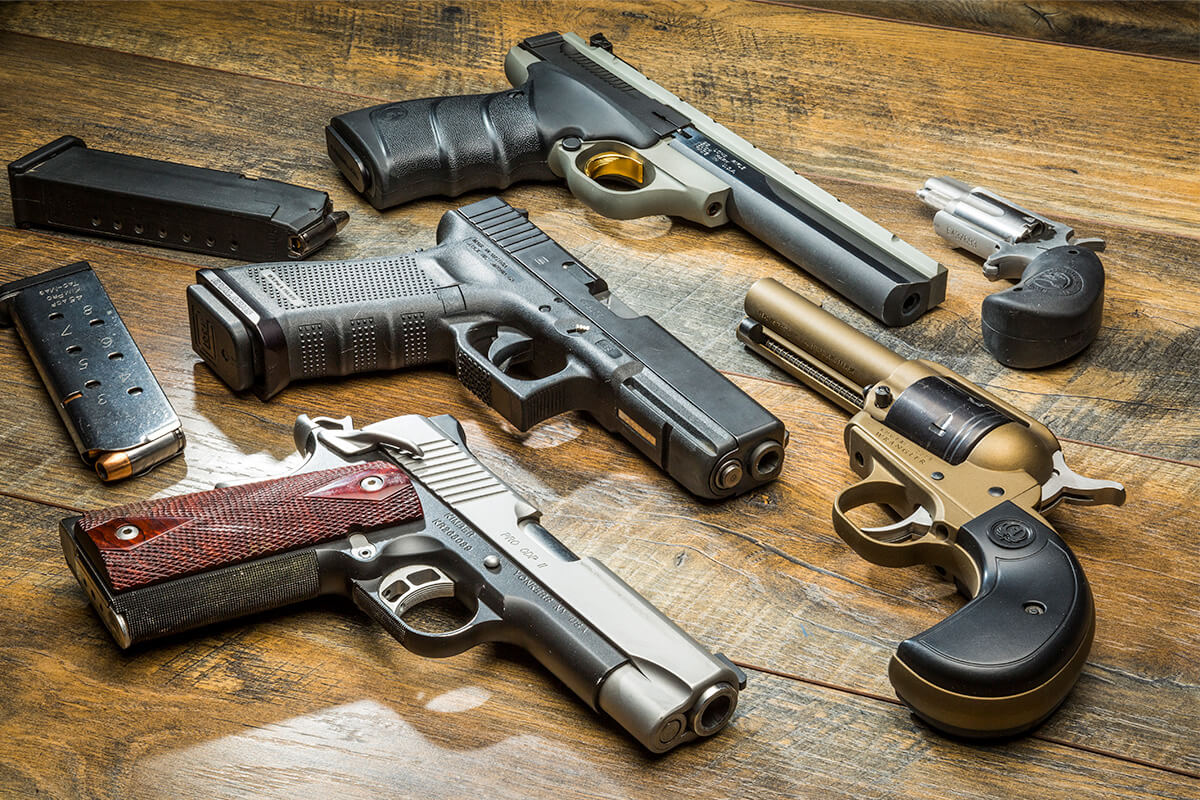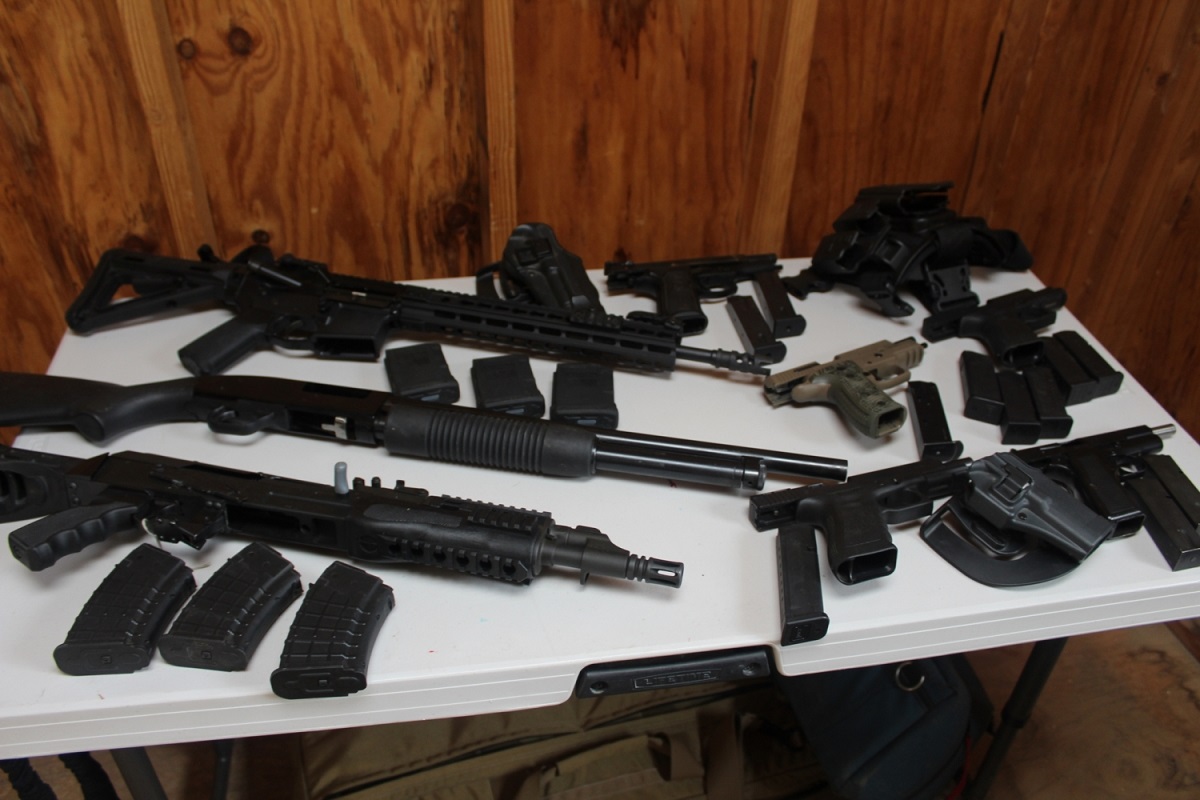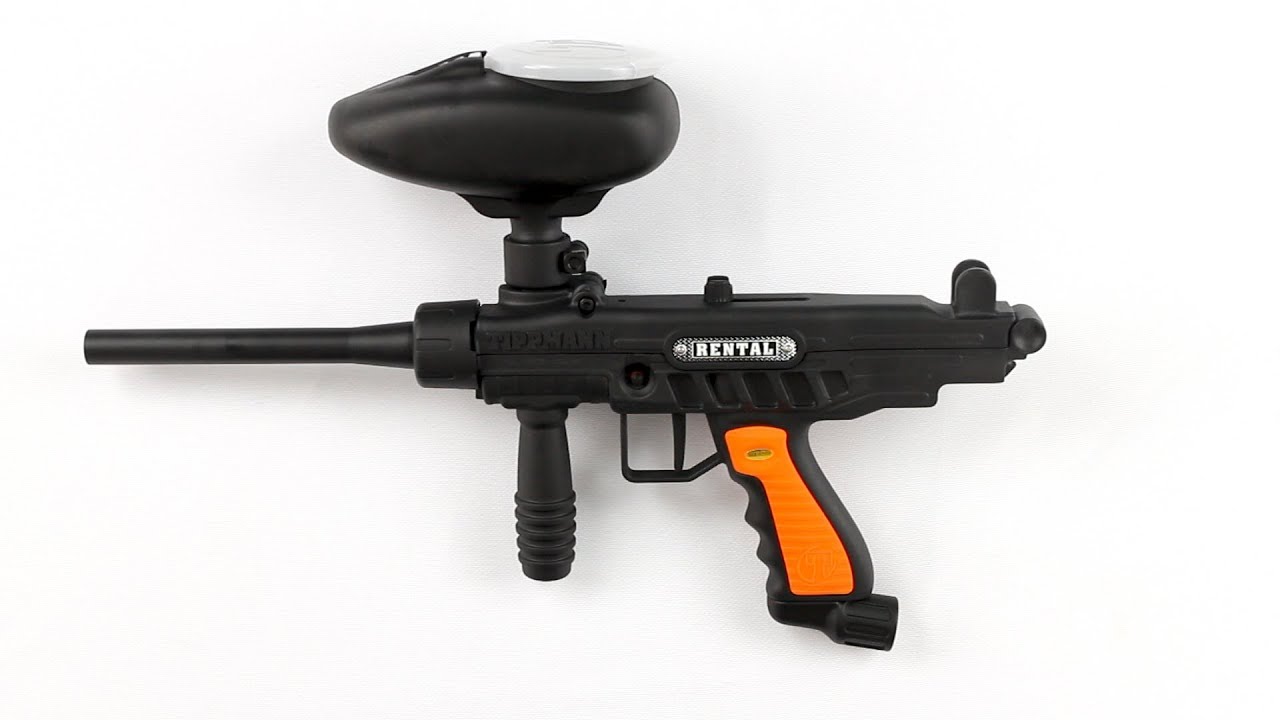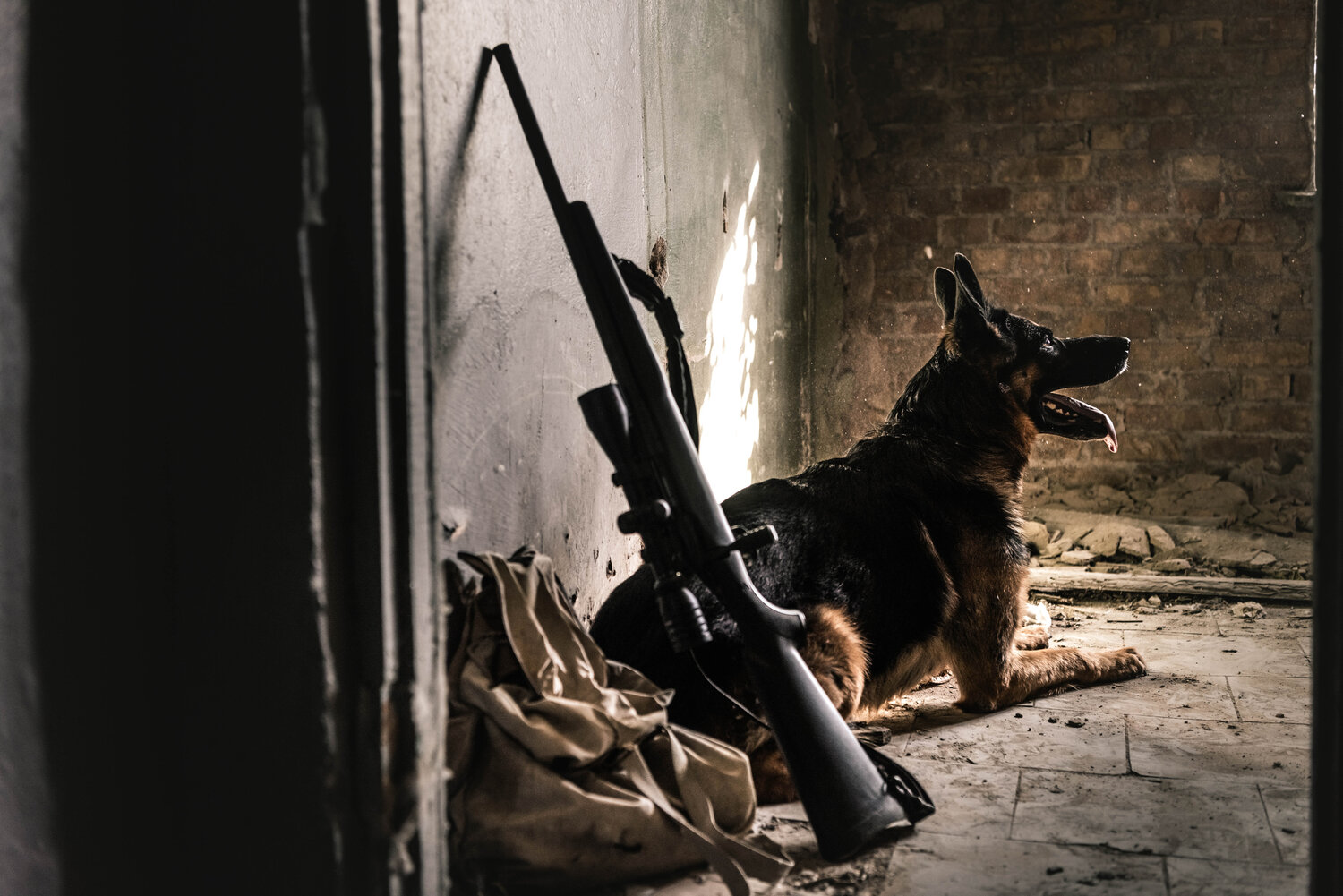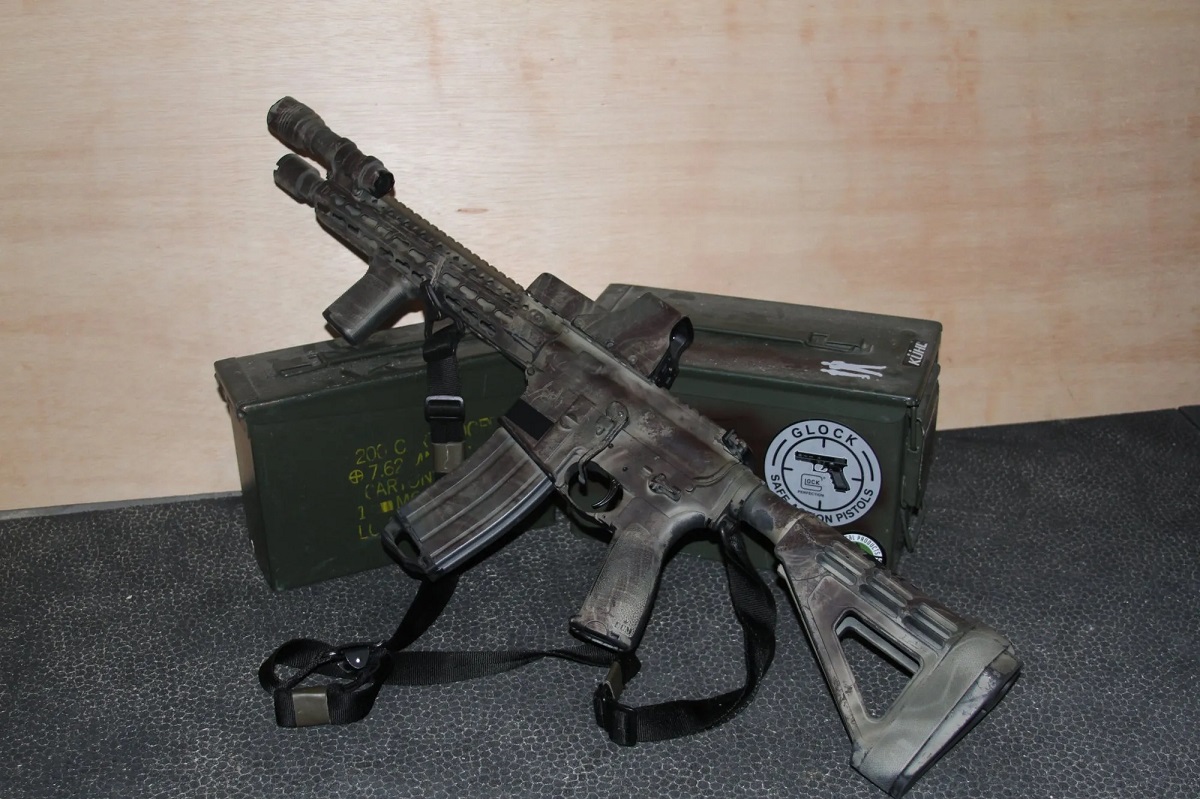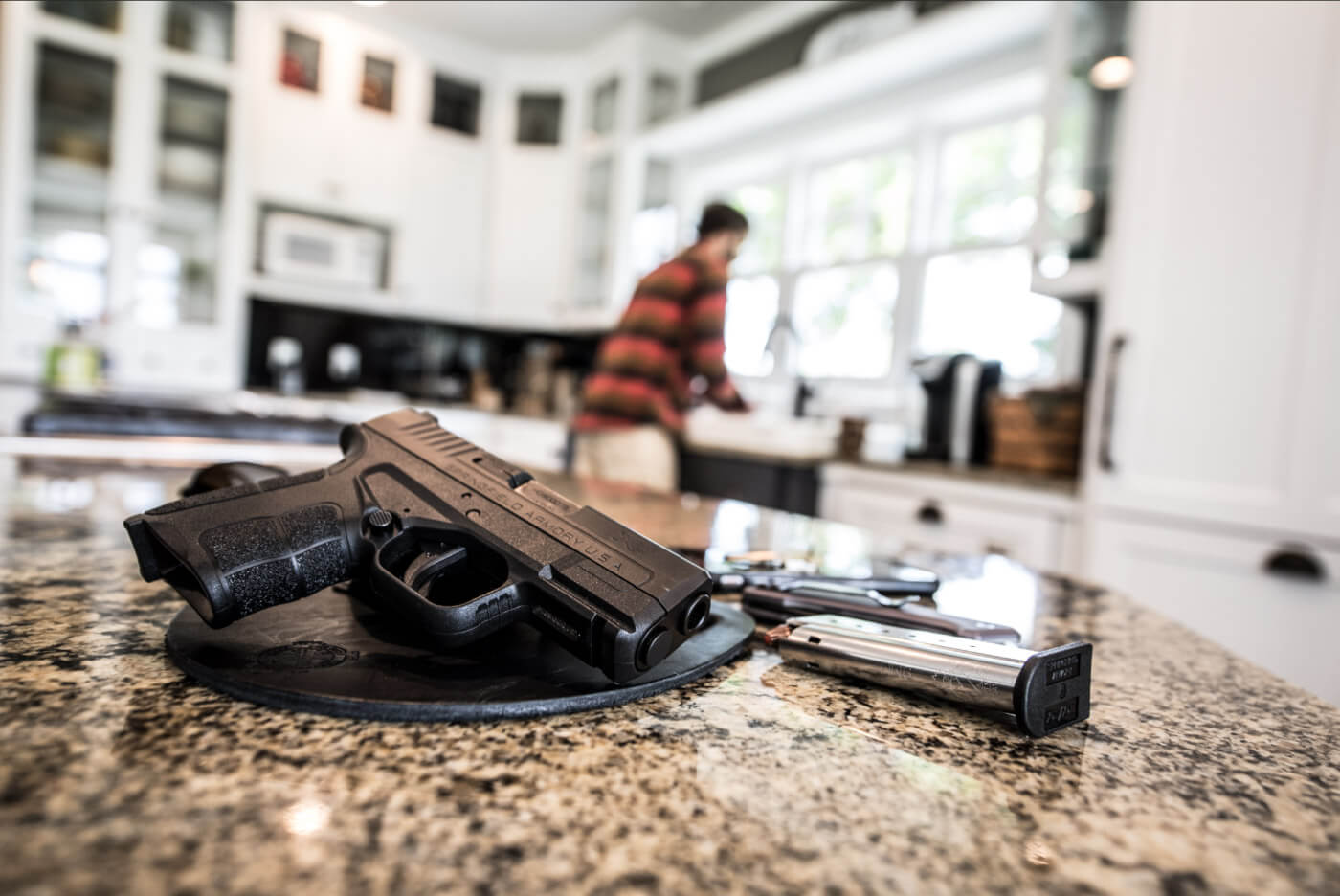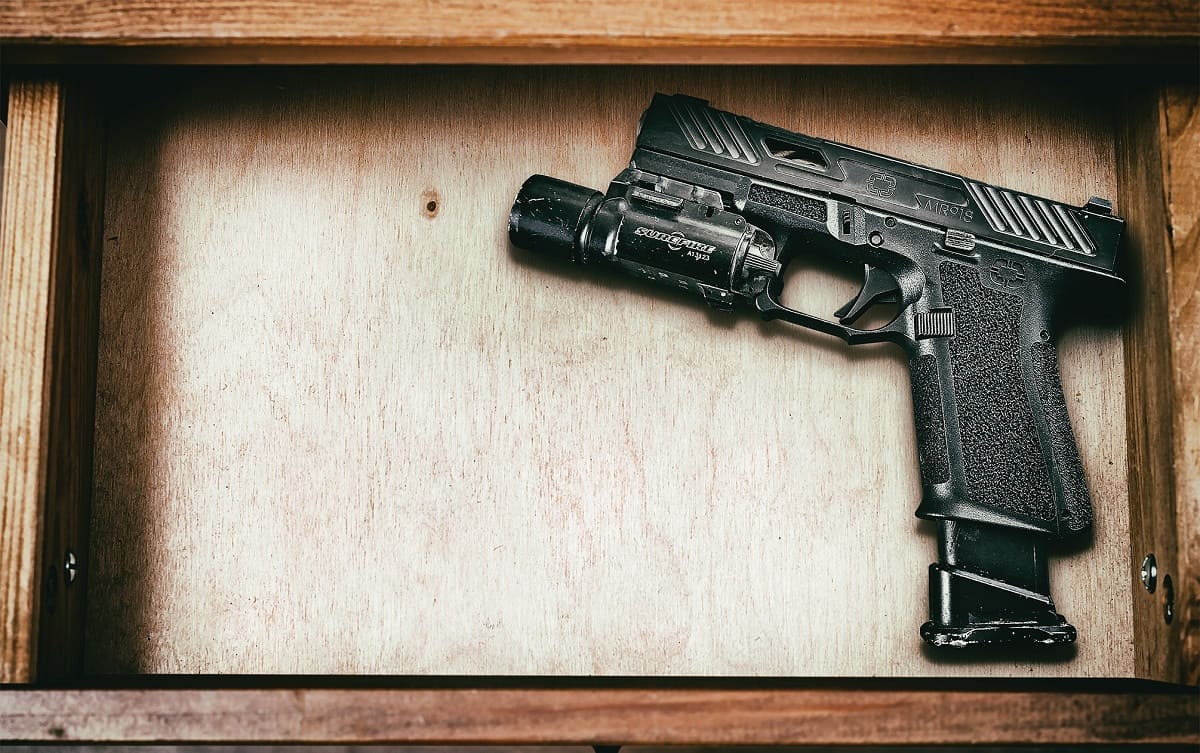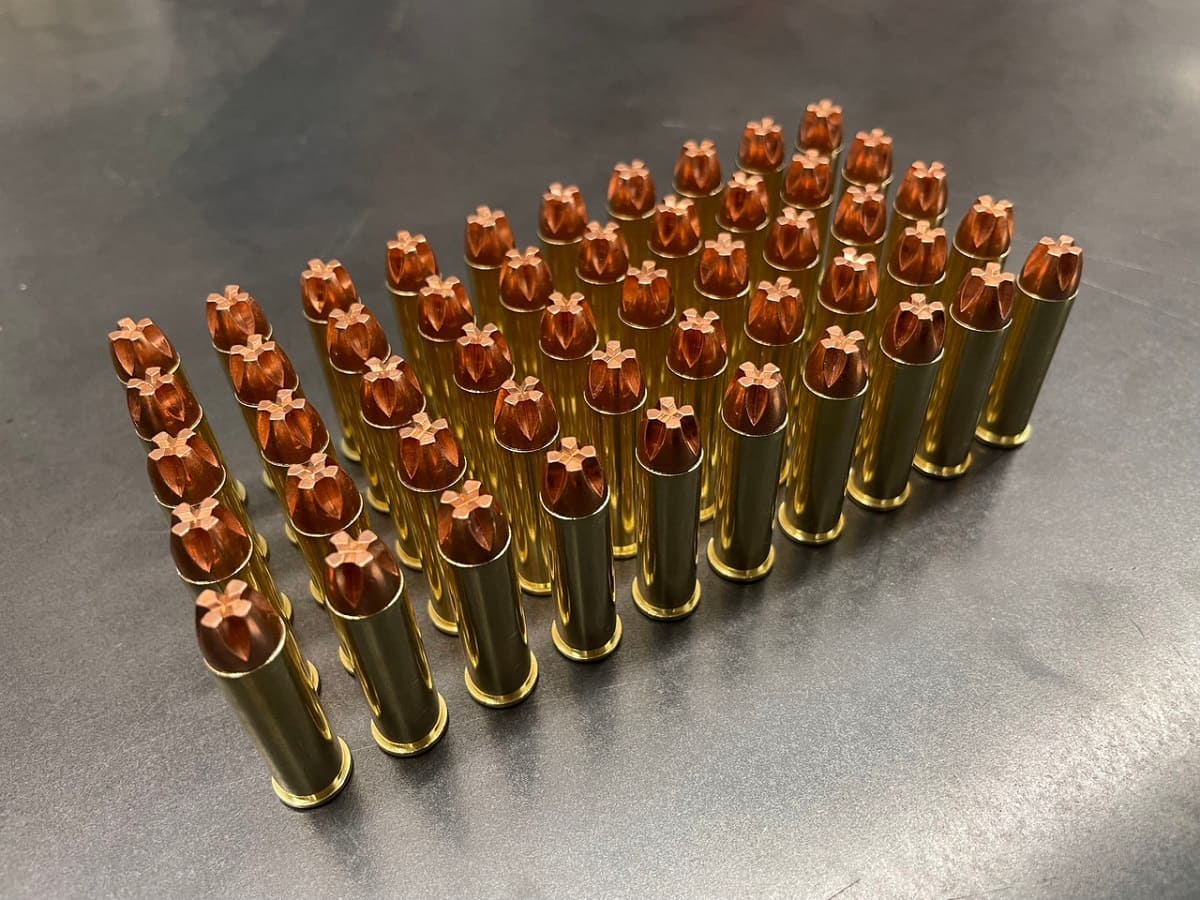Home>Home Security and Surveillance>Home Defense: When A Gun Is Not Enough


Home Security and Surveillance
Home Defense: When A Gun Is Not Enough
Modified: March 6, 2024
Enhance Your Home Security and Surveillance with Effective Home Defense Measures, Beyond Just Guns. Safeguard Your Property and Loved Ones Today!
(Many of the links in this article redirect to a specific reviewed product. Your purchase of these products through affiliate links helps to generate commission for Storables.com, at no extra cost. Learn more)
Introduction
Welcome to the world of home defense! In today’s society, ensuring the safety and security of our homes has become a top priority. Whether you live in a busy urban area or a peaceful suburban neighborhood, having effective home security measures in place is essential.
When it comes to defending your home, many people rely solely on firearms as their primary means of protection. While guns can be powerful tools in certain situations, it’s important to understand their limitations and consider other non-lethal options that can supplement and enhance your home defense strategy.
In this article, we will explore various methods and techniques to bolster your home defense preparedness. From improving your physical security measures to implementing advanced home security systems, we will cover a range of topics that will help you create a safer and more secure living environment.
So, if you are ready to take your home defense to the next level and ensure the safety of your loved ones and your property, let’s dive right in!
Key Takeaways:
- Non-lethal options like pepper spray and tasers can enhance home defense without causing severe harm. They provide an alternative means of protection and can incapacitate or deter intruders effectively.
- Building a strong neighborhood watch program creates a united front to deter criminals and enhance community safety. It fosters a sense of belonging and security within the neighborhood.
Read more: How Many Weapons Is Enough For Home Defense
Understanding the Limitations of Guns for Home Defense
It’s no secret that firearms are a popular choice for home defense. The mere presence of a gun can act as a deterrent to potential intruders, and in the event of an actual break-in, a gun can provide a means of protection. However, it’s important to recognize that guns have their limitations and may not always be the most suitable option for home defense.
One limitation is the potential for collateral damage. Bullets, once fired, can penetrate walls and travel through multiple rooms, potentially endangering innocent bystanders or causing unintended damage to your property. This is especially concerning if you live in close proximity to neighbors or have family members in nearby rooms.
In addition, the use of firearms requires a certain level of skill and training. In high-stress situations, accurately aiming and firing a gun can be challenging, even for individuals with firearms experience. Without regular practice and training, your ability to effectively use a gun for self-defense may be compromised.
Furthermore, the legal implications of using lethal force can be complex. Laws regarding self-defense and the use of firearms vary between jurisdictions, and it’s important to familiarize yourself with the regulations specific to your area. Improper use of a firearm can result in legal consequences, so understanding your rights and responsibilities is crucial.
Considering these limitations, it’s important to explore non-lethal options that can supplement your home defense strategy. Non-lethal weapons offer an alternative means of protection that can incapacitate or deter intruders without causing severe harm or permanent damage.
Some effective non-lethal tools for home defense include:
- Pepper Spray: This self-defense spray contains a chemical compound that causes temporary incapacitation and intense discomfort to an attacker, allowing you to escape or call for help.
- Tasers: Tasers deliver an electric shock that temporarily disrupts the attacker’s muscular system, rendering them immobilized and giving you an opportunity to escape.
- Stun Guns: Similar to tasers, stun guns deliver an electric shock but require direct contact with the attacker’s body. They can be an effective deterrent for short-range encounters.
- Personal Alarms: These compact devices emit a loud, piercing sound designed to attract attention and scare off potential intruders.
Integrating non-lethal options into your home defense strategy provides you with additional choices and can minimize the risks associated with using firearms. By considering the limitations of guns and exploring non-lethal alternatives, you can enhance the effectiveness of your overall home defense system.
Supplementing Firearms with Non-Lethal Home Defense Options
While firearms can be an effective deterrent and means of protection, it’s essential to explore non-lethal options that can supplement and enhance your home defense strategy.
Non-lethal home defense options offer several benefits. They provide an alternative means of defense that can incapacitate or deter an intruder without causing severe harm or permanent damage. They also offer a safer option when there is a risk of collateral damage or when you are concerned about the legal implications of using lethal force.
One popular non-lethal option is pepper spray. Pepper spray contains a chemical compound called oleoresin capsicum (OC), which causes temporary incapacitation and intense discomfort to an attacker. When sprayed in the face, it irritates the eyes, nose, and throat, causing pain, burning, and temporary blindness. It provides you with a vital window of opportunity to escape or call for help.
Tasers are another effective non-lethal tool. These devices deliver an electric shock that temporarily disrupts the attacker’s muscular system, rendering them immobilized. Tasers can be particularly useful in situations where physical distance from the attacker is possible, as they typically require a direct shot to the body to be effective.
Stun guns are similar to tasers but require direct contact with the attacker’s body. When activated, they deliver a high-voltage electric shock that overrides the attacker’s nervous system, causing muscle contractions, pain, and disorientation. Stun guns can be an effective deterrent in short-range encounters, providing you with a valuable means of self-defense.
Personal alarms are compact devices that emit a loud, piercing sound when activated. They are designed to attract attention and scare off potential intruders. Personal alarms are portable, easy to use, and can provide peace of mind both inside and outside your home. They are particularly useful for those who may be uncomfortable or unable to use physical force as a means of self-defense.
By supplementing your firearms with non-lethal options, you expand your range of choices when it comes to protecting your home and loved ones. These non-lethal tools are effective, easy to use, and can provide an additional layer of defense in situations where lethal force may not be necessary or appropriate.
It’s important to note that training and familiarization with non-lethal home defense options are crucial. Understanding how to use these tools effectively and safely is essential for their successful deployment. Take the time to practice with them, understand their range and limitations, and ensure that you are comfortable with their operation before relying on them for home defense.
Remember, the goal of home defense is to create a secure and safe environment for you and your family. By considering a combination of lethal and non-lethal options, you can tailor your home defense strategy to your specific needs and circumstances, providing you with the best possible protection.
Home Security Systems: Enhancing Your Defense Strategy
When it comes to protecting your home, one of the most effective and comprehensive options is to invest in a home security system. Home security systems not only act as a deterrent to potential intruders but also provide you with round-the-clock monitoring and instant alerts in case of any suspicious activity.
Modern home security systems come equipped with a variety of features and components designed to enhance your defense strategy. Here are some key elements to consider:
- Security Cameras: Surveillance cameras play a crucial role in deterring criminals and capturing any unauthorized activity around your property. Install cameras at the entrances, as well as strategic locations inside your home, to keep a watchful eye on potential threats. Some systems even allow for real-time remote viewing, enabling you to monitor your home from anywhere in the world.
- Alarm Systems: Alarm systems are an integral part of any home security system. They are designed to detect unauthorized entry or breach of security by triggering a loud, attention-grabbing alarm. This alerts you, your family, and your neighbors to the presence of an intruder, giving you precious time to take necessary action and contact the authorities.
- Smart Home Integration: Many home security systems now offer smart home integration, allowing you to control various aspects of your security system remotely. With a smartphone or tablet, you can arm or disarm your alarm, view live camera feeds, and receive notifications in case of any security breaches.
- Door and Window Sensors: Door and window sensors are small devices placed on entry points that detect when they are opened or closed. These sensors can instantly trigger an alarm, notifying you of any unauthorized access or attempted break-ins.
- Motion Detectors: Motion detectors use infrared technology to detect movement within a designated area. They can be strategically placed to cover vulnerable spots in and around your home, such as backyards or garages. When triggered, they activate the alarm system and can also turn on nearby lights to deter intruders.
When selecting a home security system, consider your specific needs and budget. There are many reputable companies that offer a range of packages to suit different requirements. Take the time to research and compare systems, read customer reviews, and check for warranties and customer support services.
Remember that the presence of a visible home security system can act as a significant deterrent to potential intruders. Criminals are more likely to avoid homes with advanced security measures in place, increasing the overall safety of your property.
While a home security system is a valuable addition to your defense strategy, it should be complemented by other physical security measures. Reinforcing doors and windows, installing proper lighting around your property, and maintaining good visibility of your surroundings are crucial elements that work in tandem with your security system to create a robust defense.
By investing in a reliable home security system and implementing complementary security measures, you can significantly enhance your defense strategy and provide peace of mind for you and your family.
Reinforcing Physical Security Measures for Your Home
When it comes to home defense, it’s essential to reinforce the physical security measures of your property. By taking proactive steps to secure your home, you can deter potential intruders and significantly enhance the overall safety of your living environment.
Here are some effective physical security measures to consider:
- Strong Doors and Windows: Ensure that your doors and windows are made of solid materials and have sturdy frames. Consider installing reinforced door frames, deadbolt locks, and high-quality window locks to make it more difficult for intruders to gain entry.
- Outdoor Lighting: Adequate outdoor lighting is a simple yet effective way to deter intruders. Illuminate the exteriors of your home, including entry points, pathways, and dark corners, to eliminate hiding spots and create a more secure environment.
- Security Fencing: Installing a security fence around your property adds an additional layer of protection. Opt for a sturdy fence with features like anti-climbing spikes or a locking gate to deter potential intruders from accessing your property.
- Security Film: Reinforce your windows with security film, which is a durable, transparent film applied to the glass. This film makes it more difficult for windows to be broken, serving as a deterrent to burglars and reducing the risk of forced entry.
- Landscaping Considerations: Maintain well-manicured landscaping that provides clear visibility around your home. Trim shrubs and trees near windows and entry points to eliminate potential hiding places for intruders.
- Safe Storage: Keep valuables securely stored in a safe or hidden location within your home. This reduces the likelihood of theft and ensures that your most precious items are protected in the event of a break-in.
In addition to these physical security measures, it’s important to establish good habits to further fortify your home. Always lock doors and windows when leaving your home or going to bed, and encourage family members to do the same. Consider investing in a security system that includes surveillance cameras and alarms to provide an additional layer of protection and peace of mind.
It’s also a good idea to get to know your neighbors and create a sense of community. Building strong relationships with your neighbors can lead to increased vigilance and collaboration, as neighbors can keep an eye on each other’s properties and report any suspicious activity.
Remember, a well-protected home not only deters potential intruders but also provides you and your family with a sense of safety and peace of mind. By reinforcing physical security measures and adopting smart security practices, you can create a secure fortress that protects your loved ones and belongings.
Consider adding layers of security to your home defense plan, such as motion sensor lights, reinforced doors and windows, and a monitored alarm system. These additional measures can help deter intruders and provide extra protection for your family.
Home Defense Training and Preparation
When it comes to protecting your home, it’s not just about having the right tools and security measures in place; it’s also crucial to undergo proper training and preparation. Home defense training equips you with the necessary skills and mindset to effectively respond to potential threats and ensure the safety of yourself and your loved ones.
Here are some key aspects of home defense training and preparation:
- Firearms Training: If you choose to own firearms for home defense, it’s essential to receive proper training. Enroll in a certified firearms training course to learn about firearm safety, proper handling, and marksmanship. Regular practice at a shooting range will help you improve your accuracy and proficiency with your chosen firearm.
- Self-Defense Techniques: Learning self-defense techniques can be invaluable in home defense situations. Consider enrolling in a self-defense class that teaches practical techniques for hand-to-hand combat, situational awareness, and how to disable an attacker effectively.
- Emergency Preparedness: Being prepared for emergencies is essential. Create a home emergency plan that includes escape routes, designated meeting points, and important contact information. Conduct regular drills with your family to practice responding to various emergency scenarios.
- Communication and Coordination: Effective communication and coordination within your household are crucial in times of crisis. Establish clear communication protocols and designate safe areas or a “safe room” where family members can gather and take shelter if needed. Ensure that everyone in the family knows how to operate home security systems and can communicate with emergency services.
- Stay Informed: Stay updated on current home security trends, local crime rates, and home defense strategies. This knowledge will help you make informed decisions about your home security measures and stay one step ahead of potential threats.
Alongside training, it’s important to regularly assess and improve your home’s defense capabilities. Conduct a thorough security audit of your property to identify any weaknesses or vulnerabilities. This audit should include checking door and window locks, testing the effectiveness of your alarms and motion sensors, and scrutinizing your overall home security system.
Keep in mind that home defense training and preparation extend beyond just physical skills. Developing a vigilant mindset and practicing situational awareness are equally important. Being aware of your surroundings, recognizing potential threats, and knowing when to take action can be critical in diffusing dangerous situations.
Lastly, remember to involve your entire family in home defense training and preparation. Educate them about the importance of home security, teach them to be vigilant, and ensure that they know how to respond in case of an emergency.
By investing time and effort into home defense training and preparation, you equip yourself and your family with the knowledge and skills necessary to protect your home and ensure the safety of your loved ones.
Strategies for Creating a Safe Room or Shelter in Your Home
In addition to implementing general home defense measures, creating a safe room or shelter within your home can provide an extra layer of protection during a crisis. A safe room is a designated space where you and your family can seek refuge in the event of a break-in, natural disaster, or other emergencies. Here are some strategies for creating an effective safe room:
- Select an Ideal Location: Choose a room on the ground floor or basement that has no windows or limited windows. Ideal rooms for safe rooms include bathrooms, walk-in closets, or utility rooms that can be easily converted into secured spaces. Avoid rooms with exterior doors, as these can be potential weak points.
- Reinforce the Entry Point: Install a solid door made of sturdy materials, such as solid wood or metal, with a strong deadbolt. Consider adding a security bar or a barricade system to make it even more difficult for intruders to breach the door. Reinforce the doorframe and hinges to withstand forced entry attempts.
- Secure Walls and Windows: Cover windows and any glass elements with security film or shatter-resistant material to prevent shattering and reduce the risk of injury from flying debris. Reinforce walls with materials that provide additional protection, such as bullet-resistant panels or heavy-duty security screens.
- Communication and Emergency Supplies: Install a landline phone or dedicated cell phone in the safe room to ensure reliable communication with emergency services. Keep essential emergency supplies in the safe room, including a first aid kit, non-perishable food, water, flashlights, and a battery-powered radio.
- Surveillance and Communication: Install surveillance cameras inside and outside the safe room to monitor the situation and provide real-time information. Set up a two-way communication system between the safe room and other parts of the house or security control room.
- Alternative Escape Routes: While a safe room is designed to provide a secure shelter, it’s essential to also consider alternative escape routes in case the situation allows for a safe exit. Explore options such as hidden passageways or emergency exits that lead to outdoor areas away from potential danger.
Once your safe room is prepared, ensure that all family members are aware of its existence, location, and how to quickly access it. Conduct drills and practice scenarios to familiarize everyone with the safe room’s layout and emergency procedures. Regularly check and maintain the equipment and supplies in the safe room to ensure their functionality.
It’s important to note that a safe room should never replace the need for proper home security measures throughout the entire property. The safe room is an additional layer of defense that can provide a secure retreat in extreme circumstances.
By creating a well-designed safe room, you provide yourself and your family with a refuge during emergencies, offering peace of mind and a higher level of protection in times of crisis.
The Importance of Situational Awareness in Home Defense
When it comes to home defense, one of the most critical factors for ensuring your safety is situational awareness. Situational awareness refers to the continuous process of observing your surroundings, identifying potential threats, and making informed decisions based on the information at hand. Developing and maintaining situational awareness is essential for effectively protecting your home and yourself.
Here are some reasons why situational awareness is crucial in home defense:
- Early Detection of Threats: By being aware of your surroundings, you can quickly identify any suspicious activities or individuals around your home. This early detection allows you to take appropriate action, such as contacting the authorities or preparing for a potential threat, before it escalates.
- Swift Response: Situational awareness enables you to respond promptly and appropriately to potential threats. Whether it’s locking doors and windows, activating alarms, or seeking refuge in a safe room, your awareness of the situation allows for a faster and more effective response, increasing the chances of successfully defending your home.
- Identification of Vulnerabilities: Developing situational awareness helps you identify vulnerabilities in your home’s security measures. By conducting a thorough assessment of your property and regularly evaluating its weaknesses, you can make necessary improvements and strengthen your defenses against potential threats.
- Escape and Evacuation: Situational awareness is crucial during emergency situations that may require immediate evacuation, such as a fire or natural disaster. By being aware of both the internal and external surroundings of your home, you can quickly determine the safest escape routes and ensure the well-being of yourself and your family.
- Prevention of Complacency: Situational awareness keeps you alert and prevents complacency. It helps you avoid becoming too comfortable or lax in your home security practices, as complacency can lead to overlooking potential threats or neglecting necessary precautions.
To develop and maintain situational awareness, there are a few key practices you can implement:
- Stay Alert: Be attentive and observant of your surroundings at all times, both inside and outside your home. Avoid distractions and focus on detecting any unusual or suspicious activity.
- Know Your Neighborhood: Familiarize yourself with your neighborhood’s regular activity patterns, including the presence of any recurring safety concerns. Be aware of any recent criminal activity in the area to understand potential risks specific to your location.
- Stay Informed: Keep up-to-date with local news, community alert systems, and crime statistics. Stay informed about current home security trends and techniques to better protect your home.
- Trust Your Instincts: Intuition plays a significant role in situational awareness. If something feels off or doesn’t seem right, trust your instincts and take appropriate action.
- Regularly Assess Security Measures: Continuously evaluate the effectiveness of your home security measures and make necessary adjustments. Regularly review and update your security system, locks, and physical barriers to ensure optimal protection.
Developing and maintaining situational awareness is a habit that needs to be practiced consistently. By being aware of your surroundings and identifying potential threats, you can take proactive steps to protect your home, loved ones, and yourself from harm.
Remember, situational awareness is a vital component of a comprehensive home defense strategy and should be coupled with other security measures to ensure the safety and security of your home.
Building Strong Neighborhood Watch Programs
When it comes to combating crime and enhancing home security, one of the most effective strategies is to build a strong neighborhood watch program. A neighborhood watch program brings community members together to actively participate in the protection and safety of their neighborhood. By working together, neighbors can deter criminals, identify suspicious activity, and create a sense of unity and security within their community.
Here are some key steps to building a strong and successful neighborhood watch program:
- Engage Your Neighbors: Begin by reaching out to your neighbors and gauging their interest in forming a neighborhood watch program. Organize a meeting to discuss the goals and benefits of the program, encouraging active participation from as many community members as possible.
- Establish Communication Channels: Set up regular communication channels to keep members informed and engaged. This could be through email lists, social media groups, or dedicated neighborhood watch apps. Ensure that everyone has a way to receive and share important information related to neighborhood safety.
- Invite Local Law Enforcement: Contact your local law enforcement agency and invite them to attend a neighborhood watch meeting. They can provide valuable guidance on crime prevention, share crime statistics specific to your area, and educate residents on best practices for home security.
- Organize Neighborhood Patrols: Encourage residents to participate in neighborhood patrols, where members keep an eye on their surroundings and report any suspicious activity to the appropriate authorities. This increased visibility can deter criminals and create a safer environment for everyone.
- Host Educational Workshops and Events: Organize educational workshops and events to empower community members with the knowledge and skills needed to enhance their home security. Topics can include self-defense techniques, home security tips, and emergency preparedness.
- Collaborate with Local Businesses: Establish relationships with local businesses and encourage their engagement in the neighborhood watch program. They can support the cause by providing resources, sponsoring events, or offering discounts on home security products and services.
- Encourage Reporting and Documentation: Emphasize the importance of reporting any suspicious activity or crimes to law enforcement. Encourage residents to keep a record of incidents, including dates, times, descriptions, and any supporting evidence, such as photographs or videos. This documentation can aid in investigations and provide valuable information for crime prevention efforts.
- Regular Meetings and Updates: Hold regular neighborhood watch meetings to provide updates on crime trends, share success stories, and discuss any emerging concerns or challenges. These meetings foster a sense of community and ensure that members stay engaged and informed.
Building a strong neighborhood watch program requires commitment, collaboration, and the active involvement of residents. It’s important to remember that the role of a neighborhood watch is to observe and report, not to confront or take matters into their own hands.
By working together as a united front, community members can create a safer environment, deter criminals, and build a strong sense of belonging and security in their neighborhood.
Read more: Where To Keep Your Home Defense Gun
Conclusion
In conclusion, ensuring the safety and security of your home is of utmost importance in today’s world. While firearms may be a popular choice for home defense, it’s crucial to recognize their limitations and consider supplementing them with non-lethal options. Non-lethal tools like pepper spray, tasers, stun guns, and personal alarms offer an alternative means of protection that can incapacitate or deter intruders without causing severe harm.
Furthermore, investing in a reliable home security system can enhance your defense strategy by providing 24/7 monitoring, surveillance cameras, alarm systems, and smart home integration. Reinforcing physical security measures such as strong doors and windows, outdoor lighting, and security fencing also plays a crucial role in keeping your home safe.
Home defense training and preparation are equally important, as they equip you with the skills and mindset to effectively respond to potential threats. By undergoing firearms training, learning self-defense techniques, and developing emergency preparedness plans, you are better prepared to protect yourself and your loved ones.
Creating a safe room or shelter within your home adds another layer of defense in critical situations. By selecting an ideal location, reinforcing entry points, securing walls and windows, and ensuring communication and emergency supplies, you can have a secure space to seek refuge when needed.
Being vigilant and maintaining situational awareness is key in home defense. By staying alert, knowing your neighborhood, staying informed, and regularly assessing security measures, you can proactively identify potential threats and take appropriate actions in a timely manner.
Building a strong neighborhood watch program further enhances your home security. Engaging your neighbors, establishing communication channels, organizing patrols, hosting educational events, and collaborating with local law enforcement and businesses create a united front to deter criminals and create a supportive and secure community.
In conclusion, a comprehensive home defense strategy combines various elements, including non-lethal options, home security systems, physical security measures, training, situational awareness, and community cooperation. By implementing these strategies and working together, you can create a safer and more secure living environment for you and your loved ones.
Frequently Asked Questions about Home Defense: When A Gun Is Not Enough
Was this page helpful?
At Storables.com, we guarantee accurate and reliable information. Our content, validated by Expert Board Contributors, is crafted following stringent Editorial Policies. We're committed to providing you with well-researched, expert-backed insights for all your informational needs.
